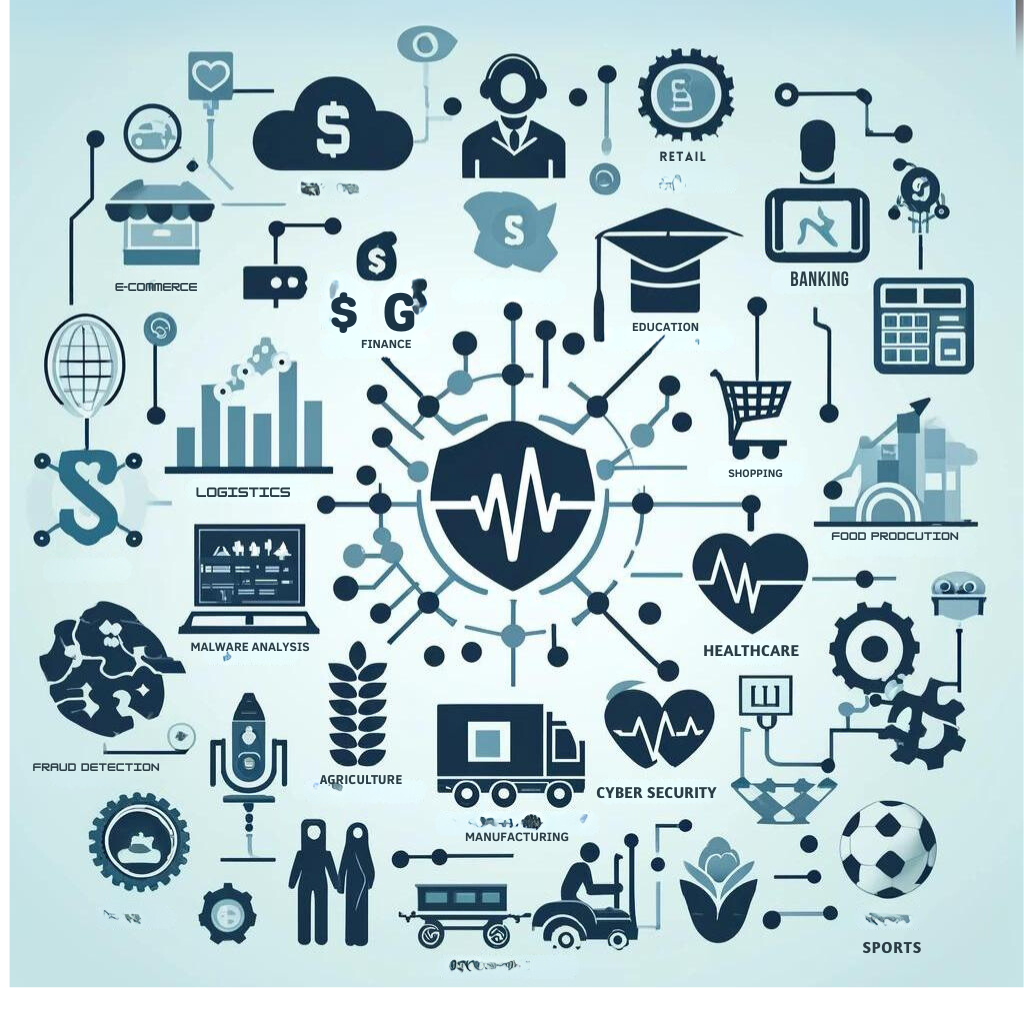Artificial intelligence (AI) has become a part of our daily lives, from virtual assistants to personalized recommendations. Its potential to revolutionize fields such as medicine, transportation, and manufacturing seems limitless. However, this immense power brings forth numerous complexities and challenges. The increasing influence of AI raises critical questions about the future. Will AI be a force for progress or lead to unforeseen consequences? Can we ensure that AI development aligns with human values and autonomy? By fostering a nuanced understanding and promoting open dialogue, we can navigate AI’s development for a future beneficial to all.
Origin of the Article
This editorial is based on “When AI weds molecular biology, miracle treatments are born,” published in Livemint on 06/06/2024. The article explores the transformative potential of combining AI with molecular biology in medical research and treatment.
Relevancy for UPSC Students
Understanding the transformative potential of AI in molecular biology is crucial for UPSC aspirants. This topic is relevant to the UPSC syllabus, particularly in Science, Technology and Ethics papers. It provides insights into technological advancements and their ethical implications, helping aspirants develop a comprehensive perspective on contemporary issues.

Why in News
The convergence of artificial intelligence (AI) with molecular biology in medical research has garnered significant attention for its transformative potential. This topic is crucial for UPSC aspirants, as it intersects with GS Paper 3, focusing on the achievements of Indians in science and technology. Moreover, understanding the applications and challenges of AI has been a recurring theme in previous UPSC exams, highlighting its importance in both the Prelims and Mains stages.
Applications of Artificial Intelligence in Various Sectors
Artificial intelligence (AI) is transforming numerous sectors, driving innovation and efficiency. From healthcare to finance, AI’s potential is reshaping traditional processes, enhancing accuracy, and enabling personalized experiences. This section explores the diverse applications of AI across various industries, highlighting its significant impact.
Healthcare
- Medical Diagnosis: AI improves diagnostic accuracy by analyzing medical images and data. For instance, AI can detect cancerous lesions in mammograms with greater precision than human radiologists, facilitating an early and accurate diagnosis.
- Drug Discovery: AI expedites drug discovery by predicting the efficacy of potential drug candidates. DeepMind’s AlphaFold, which predicts protein structures, exemplifies AI’s role in accelerating the development of new treatments.
- Personalized Medicine: AI tailors treatment plans based on genetic profiles. By analyzing genetic data, AI optimizes chemotherapy dosages for cancer patients, ensuring personalized and effective treatment strategies.
Education
- Intelligent Tutoring Systems (ITS): AI-powered systems personalize learning experiences by adapting to individual student needs. These systems adjust to each student’s pace and learning style, providing tailored educational support.
- Learning Analytics: AI analyzes student data, such as attendance and performance patterns, to predict potential challenges. This enables educators to intervene early, improving student outcomes and reducing dropout rates.
Finance and Banking
- Fraud Detection: AI detects fraudulent activities by analyzing transaction data. It identifies unusual spending patterns in real time, enhancing security and preventing financial losses.
- Risk Management: AI evaluates investment risks by analyzing market data. This helps in identifying investment opportunities and managing portfolios more effectively, ensuring better decision-making.
- Algorithmic Trading: AI executes trades based on data analysis and predefined algorithms. High-frequency trading, driven by AI, optimizes trading strategies and enhances market efficiency.
Retail and E-commerce
- Personalized Product Recommendations: AI enhances shopping experiences by analyzing customer data and preferences. This leads to tailored product recommendations, improving customer satisfaction and sales.
- Inventory Management: AI optimizes inventory levels by analyzing sales data and demand patterns. This reduces overstocking and stockouts, ensuring efficient inventory management.
- Chatbots and Virtual Assistants: AI-powered chatbots provide customer support, handle queries, and assist with online shopping. This improves customer service and enhances the overall shopping experience.
Manufacturing and Logistics
- Predictive Maintenance: AI predicts potential machinery failures by analyzing sensor data. This enables proactive maintenance, reducing downtime and increasing operational efficiency.
- Supply Chain Optimization: AI optimizes supply chains by analyzing transportation routes and weather conditions. This minimizes costs and improves delivery times, enhancing supply chain efficiency.
- Automated Quality Control: AI-powered vision systems inspect products for defects. This ensures quality control and reduces human error, maintaining high product standards.

Cybersecurity
- Threat Detection and Response: AI enhances security by analyzing network data and responding to cyber threats in real-time. This provides robust protection against cyber attacks.
- Malware Analysis: AI classifies malware samples, helping security researchers understand new threats. This aids in developing effective countermeasures and ensuring cybersecurity.
- User and Entity Behavior Analytics (UEBA): AI detects anomalies by analyzing behavior patterns. This helps in identifying potential security breaches and mitigating insider threats.
Agriculture and Food Production
- Crop Monitoring and Yield Prediction: AI-powered drones and satellite imagery monitor crop health and predict yields. This enables informed decision-making and resource optimization in agriculture.
- Precision Agriculture: AI analyzes soil conditions and environmental factors to recommend efficient resource usage. This improves agricultural productivity and reduces waste.
- Food Safety: AI-powered vision systems inspect food products for contaminants. This ensures food safety and quality control, protecting consumer health.
Sports
- Player Performance Analysis: AI analyzes data from wearable devices and video footage to evaluate player performance. This helps in identifying areas for improvement and preventing injuries.
- In-Game Strategy and Tactics: AI recommends optimal game strategies by analyzing real-time data. This enhances team performance and strategic decision-making during games.
Major Challenges with the Rise of Artificial Intelligence
The rapid advancement of AI presents significant challenges, raising concerns about transparency, fairness, and societal impact. This section explores the complexities and potential risks associated with AI’s growing influence.
Black Box Conundrum
Opaque Decision-Making: Many AI algorithms, especially deep learning models, function as opaque “black boxes.” Their decision-making processes are often not transparent, hindering explainability and accountability in critical domains like healthcare and criminal justice.
The Data Dilemma
Data Quality and Fairness: AI’s performance and fairness are heavily influenced by the quality and quantity of data available. Biased training datasets can lead to discriminatory outcomes, such as biased recruitment tools that unfairly disadvantage qualified candidates.
Job Displacement Tightrope
Workforce Disruption: AI automation is set to disrupt the workforce, potentially leading to widespread job displacement. The transition pace and availability of retraining programs for displaced workers are major concerns, with studies predicting significant job automation by 2030.
AI Arms Race and Existential Risk
Autonomous Weapons: The rapid development of AI raises the possibility of an “AI arms race” between nations, leading to autonomous weapons systems that operate outside human control. This poses significant existential threats and highlights the need for ethical AI development.
Value Alignment Problem
Divergent Objectives: AI systems’ values and objectives may diverge from those of their human creators, leading to unintended and potentially harmful outcomes. This challenge emphasizes the importance of aligning AI development with human values.
Deepfakes and Misinformation
Synthetic Media Threat: AI-powered deepfake technology creates highly realistic synthetic media, posing significant threats to the integrity of information. Deepfake videos can spread misinformation during conflicts or crises, undermining trust in digital content.
Measures to Overcome the Challenges Posed by AI
Addressing AI challenges requires comprehensive measures focusing on regulation, transparency, and collaboration. This section outlines essential steps to ensure responsible AI development and deployment.
Standardization and Certification for AI Systems
Safety and Fairness: Developing standardized testing procedures and certification processes for AI systems ensures baseline safety, security, and fairness across applications. This fosters trust and accountability in AI technologies.
Algorithmic Impact Assessments
Societal Impact Analysis: Mandating Algorithmic Impact Assessments (AIAs) for high-risk AI applications identifies potential societal impacts and biases. This promotes ethical AI development and minimizes harmful outcomes.
Focus on Explainable AI (XAI) Tools
Transparency in AI: Investing in user-friendly Explainable AI (XAI) tools enhances transparency and trust. These tools help developers and nonexperts understand AI model reasoning, fostering greater accountability.
AI for AI Safety
AI Monitoring: Leveraging AI to monitor other AI systems ensures safety and security. Specialized AI “watchdogs” can detect biases, security vulnerabilities, and unintended consequences, enhancing AI reliability.
Upskilling and Reskilling the Workforce
Proactive Workforce Development: Governments, educational institutions, and industries should collaborate on reskilling and upskilling programs. This equips workers with the skills needed for the AI era, ensuring a smooth transition and reducing job displacement.
Establishing Robust AI Governance Frameworks
Ethical AI Development: Robust AI governance frameworks, developed through international collaboration, ensure responsible AI development and deployment. The European Parliament’s Artificial Intelligence Act serves as a model for establishing guidelines and regulations.
Fostering Human-AI Collaboration
Complementary Strengths: Emphasizing human-AI collaboration enhances effectiveness by leveraging complementary strengths. Developing AI systems that work alongside humans fosters a future where AI augments human capabilities, driving progress and innovation.
Conclusion
As we stand at the crossroads of AI and molecular biology, the possibilities for medical advancements are boundless. However, this progress brings with it ethical and regulatory challenges that must be thoughtfully navigated. For UPSC aspirants, understanding the multifaceted impact of AI is crucial. By fostering a balanced perspective, future policymakers can ensure AI serves as a tool for inclusive and sustainable development.
| UPSC Civil Services Examination, Previous Year Questions (PYQs) Mains Q. What are the areas of prohibitive labour that can be sustainably managed by robots? Discuss the initiatives that can propel research in premier research institutes for substantive and gainful innovation. (2015) Q. Examine the potential socio-economic impacts of AI on employment in India. How can India balance technological advancement with job creation to avoid large-scale unemployment? |


